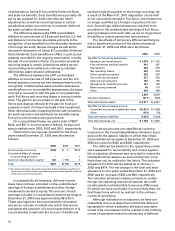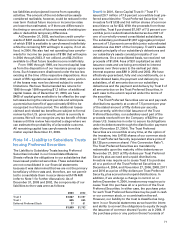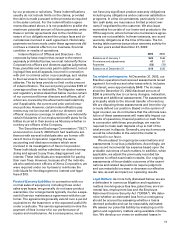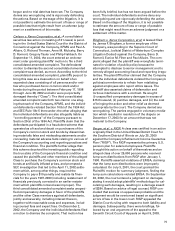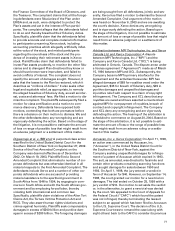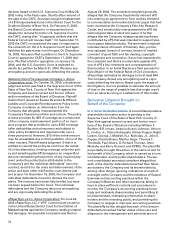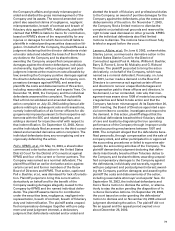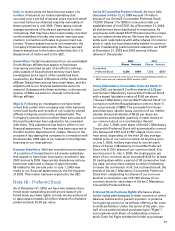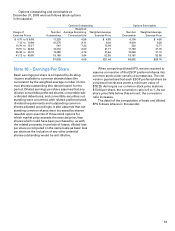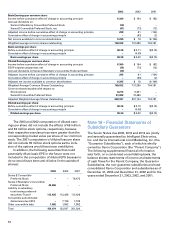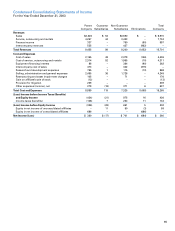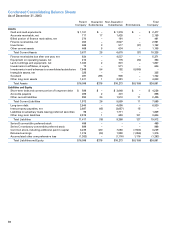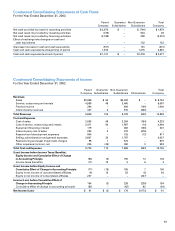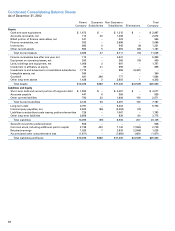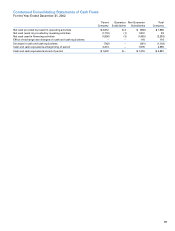Xerox 2003 Annual Report Download - page 82
Download and view the complete annual report
Please find page 82 of the 2003 Xerox annual report below. You can navigate through the pages in the report by either clicking on the pages listed below, or by using the keyword search tool below to find specific information within the annual report.
80
Other Matters:
Xerox Corporation v. 3Com Corporation, et al.: On April
28, 1997, we commenced an action in U.S. District Court
for the Western District of New York against Palm for
infringement of the Xerox “Unistrokes” handwriting
recognition patent by the Palm Pilot using “Graffiti.” On
January 14, 1999, the U.S. Patent and Trademark Office
(“PTO”) granted the first of two 3Com/Palm requests
for reexamination of the Unistrokes patent challenging
its validity. The PTO concluded its reexaminations and
confirmed the validity of all 16 claims of the original
Unistrokes patent. On June 6, 2000, the judge narrowly
interpreted the scope of the Unistrokes patent claims
and, based on that narrow determination, found the
Palm Pilot with Graffiti did not infringe the Unistrokes
patent claims. On October 5, 2000, the Court of Appeals
for the Federal Circuit reversed the finding of no
infringement and sent the case back to the lower court
to continue toward trial on the infringement claims. On
December 20, 2001, the District Court granted our
motions on infringement and for a finding of validity
thus establishing liability. On December 21, 2001, Palm
appealed to the Court of Appeals. We moved for a trial
on damages and an injunction or bond in lieu of injunc-
tion. The District Court denied our motion for a tempo-
rary injunction, but ordered a $50 bond to be posted to
protect us against future damages until the trial. Palm
provided a $50 irrevocable letter of credit in favor of
Xerox. In January 2003, after the oral argument, Palm
announced that it would stop including Graffiti in its
future operating systems. On February 20, 2003, the
Court of Appeals affirmed the infringement of the
Unistrokes patent by Palm’s handheld devices and that
Xerox will be entitled to an injunction if the validity of
the patent is favorably determined. It remanded the
validity issues back to the District Court for further
validity analysis. On March 20, 2003, we sought recon-
sideration of the Court of Appeals opinion, but such
reconsideration was denied on April 8, 2003. The par-
ties anticipate being contacted soon by the District
Court regarding procedure to be followed on remand.
Because the validity of the patent must be reconsid-
ered, the basis for the protection bond no longer exists,
and the $50 irrevocable letter of credit has been
returned. We received a decision and order of the
District Court on July 21, 2003 which sets a schedule for
briefing of summary judgment with respect to the issue
of validity of the patent in suit, with a hearing for argu-
ment scheduled to occur on December 10, 2003.
Pursuant to a court order of July 17, 2003, (1) expert
reports were exchanged between the parties during the
third quarter 2003, (2) depositions of experts from both
sides were taken shortly thereafter, and (3) summary
judgment motions, directed solely to the issue of validi-
ty, were filed by the parties on October 10, 2003. On
December 10, 2003, the District Court heard oral argu-
ments on these summary judgment motions.
U.S. Attorney’s Office Investigation: The U.S. attor-
ney’s office in Bridgeport, Connecticut, is conducting
an investigation into matters relating to Xerox. Xerox
is a subject of this grand jury investigation. We believe
that the U.S. Attorney’s office is focusing on account-
ing and disclosure issues during the period 1998 to
2000, particularly relating to the Company’s operations
in Latin America. The accounting matters upon which
the U.S. Attorney’s office appears to be focusing are
ones that were investigated by the SEC and addressed
in the Company’s restatements. It is not possible at
this time to reasonably assess the final outcome of
this investigation or its future impact on the Company.
We are cooperating with the investigation and provid-
ing documents as requested.
Securities and Exchange Commission Investigation and
Review: On April 1, 2002, we announced that we had
reached a settlement with the SEC on the previously dis-
closed proposed allegations related to matters that had
been under investigation since June 2000. As a result, on
April 11, 2002, the SEC filed a complaint, which we simul-
taneously settled by consenting to the entry of an Order
enjoining us from future violations of Section 17(a) of the
Securities Act of 1933, Sections 10(b), 13(a) and 13(b) of
the 1934 Act and Rules 10b-5, 12b-20, 13a-1, 13a-13 and
13b2-1 thereunder, requiring payment of a civil penalty
of $10, and imposing other ancillary relief. We neither
admitted nor denied the allegations of the complaint.
The $10 civil penalty is included in Other Expenses, net in
2002 in the Consolidated Statement of Income. Under
the terms of the settlement, in 2001 we restated our
financial statements for the years 1997 through 2000.
As part of the settlement, a special committee of
our Board of Directors retained Michael H. Sutton, for-
mer Chief Accountant of the SEC, as an independent
consultant to review our material accounting controls
and policies. Mr. Sutton commenced his review in July
2002. On February 21, 2003, Mr. Sutton delivered his
final report, together with observations and recom-
mendations, to members of the special committee. On
April 18, 2003, a copy of Mr. Sutton’s report was deliv-
ered to the Board of Directors and the SEC. On June
17, 2003, the Board of Directors reported to the SEC
the decisions taken as a result of the report. We have a
comprehensive ongoing program addressing contin-
ued progress in enterprise risk management as well as
our process and systems management. We are devot-
ing significant additional resources to this end.
Other Matters: It is our policy to promptly and careful-
ly investigate, often with the assistance of outside
advisers, allegations of impropriety that may come to
our attention. If the allegations are substantiated,
appropriate prompt remedial action is taken. When
and where appropriate, we report such matters to the
U.S. Department of Justice and to the SEC, and/or
make public disclosure.


